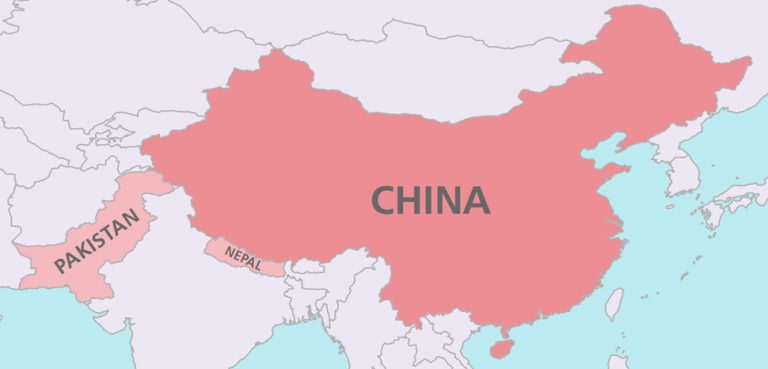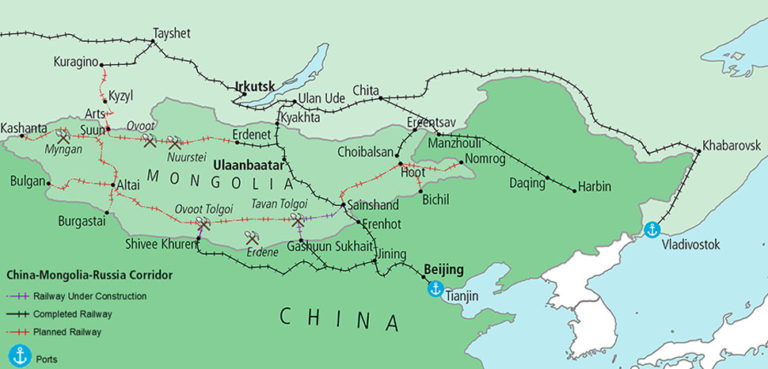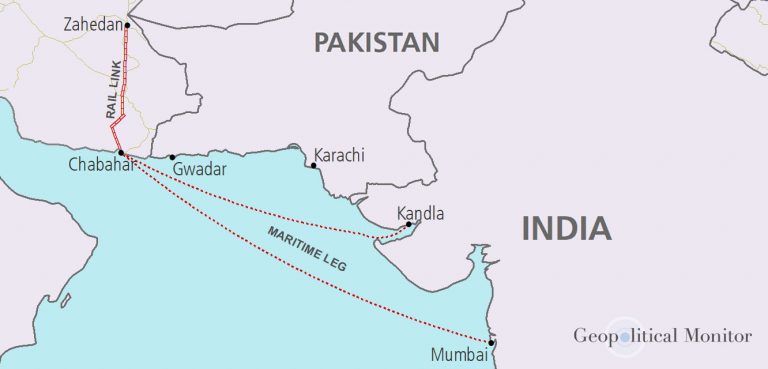
The Nanning-Singapore Economic Corridor, or China-Indochina Peninsula Economic Corridor (CICPEC), is one of the six major corridors envisioned by China’s One Belt One Road Initiative (OBOR). Its goal is to deepen economic links between ASEAN countries in Southeast Asia and China’s relatively underdeveloped southwest region (Yunnan, Guangxi). The plan hopes to do so by facilitating the construction of cross-border rail and road infrastructure projects, streamlining customs procedures, and harmonizing regulations whenever possible. It builds on the ASEAN-China Free Trade Area that came into effect in 2010. OBOR isn’t the only cooperation mechanism in the region; as a relative newcomer, it has slotted in with other initiatives such as the Greater Mekong Subregion Economic Cooperation Program and the ASEAN Economic Community of 2015 (an initiative aimed at fostering greater economic integration within ASEAN itself).
This fact sheet will focus on plans to link the region with high-speed rail. The idea is not a new one – European colonial powers dreamed of linking their holdings in the 18th century, and more recently the idea of a Pan-Asian Railway Network has been floated by ASEAN and China throughout the 1990s and 2000s.
Only now has the scheme become remotely possible, and even so there are still hurdles to be overcome. Some are economic: securing finance for new infrastructure projects and ensuring that new routes are profitable (along with the overriding question of who pays when they’re not); some are political: ASEAN members have various degrees of concern over ceding regional leadership to China; and some are merely technical: new rail lines must traverse vast tracts of land and navigate mountains, valleys, rivers, etc.
The Pan-Asia Railway Network has been envisioned as three possible routes, with China’s Kunming and Thailand’s Bangkok serving as two central hubs: an eastern route that runs through Vietnam and Cambodia; a western route that runs through Myanmar; and a central route that runs through Laos and Thailand before proceeding southward to Singapore via Malaysia. Of these three possible courses, it’s the central route that has seen the most substantial progress in recent years.
Here’s how the individual rail routes break down:
Central Route (Kunming-Vientiane-Bangkok-Kuala Lumpur-Singapore)
Kunming-Vientiane
- Cost: $6.04 billion.
- Length: 427 km.
- Who: Laos-China Railway Co., Ltd. (China-Laos joint venture) with construction contract awarded to China Railway Group.
- When: Groundbreaking ceremony in 2015; construction commenced in 2016; expected completion date of 2021.
- Top speed: 160 km/h passenger & 120 km/h freight.
- The rail project is a very big deal for a small, underdeveloped economy like Laos. The Laotian government is on the hook for 30% of the cost, with much of the money coming in the form of loans from the Export-Import Bank of China and other Chinese banks. Laos is already highly indebted with a public debt of around 70% of GDP and a deep fiscal deficit. The rail line is the largest infrastructure ever undertaken by Laos, and its total cost is equivalent to over one-third of the country’s GDP.
- The Laos portion of the railway will be single-track and use the Chinese standard of 1,435 mm, which is different from the one-meter gauge common in Southeast Asian countries.
Vientiane-Nakhon Ratchasima
- The next portion of the Central Route, linking Vientiane with Thailand’s Nakhon Ratchasima, has been shelved for the time being due to financing disputes between China and Thailand. After lengthy negotiations following the signing of a memorandum of understanding in 2014, Thailand decided to self-finance its portion of the route, beginning with the Bangkok-Nakhon Ratchasima section, and leaving the matter of linking up at the Laos border to a later date.
- The original plan was to create an 850 km dual-track (one meter gauge and 1.435 China standard gauge) from the Laos border to Bangkok.
Bangkok-Nakhon Ratchasima
- Cost: $5.4 billion.
- Length: 252 km.
- Top speed: 250 km/h.
- When: Construction expected to begin in early 2018.
- The project will be financed solely by the Thai government after negotiations with the Chinese side fell through. At issue were the interest rates being offered by Chinese lenders (2%, when the Thai government could borrow publically at 1.9%), and the Thai government’s plan to convert preexisting meter single-track to standard double-track, which would effectively allow it to compete with the new China line for freight. This left the new Laos-Thailand high-speed rail dependent on passenger travel for profit, a risky proposition given the abundance of low-cost passenger airlines operating in the region.
- After negotiations fell apart, the Thai government pledged to build a high-speed link between Bangkok and Nakhon Ratchasima. Many believe the move is meant to force the Chinese government into offering better terms, since it will need to expand its expensive China-Laos railway southward in order to make it financially tenable in the future.
Kuala Lumpur-Bangkok
- When: Proposed; early negotiations between Thailand and Malaysia have taken place.
- Length: 1,500 km.
- The Kuala Lumpur-Bangkok section of the Kunming-Singapore railway would be the highest-hanging fruit of any regional rail network. It would have to traverse a very long distance, much of it through underdeveloped and rural areas that would provide little economic benefit to the railway’s operators. Unsurprisingly, the project would also require a huge investment to get off the ground, and given Thailand and China’s struggles to get a deal on the Bangkok-Vientiane portion done, a Kuala Lumpur-Bangkok initiative won’t be forthcoming anytime soon.
Singapore-Kuala Lumpur
- Length: 335 km.
- When: Call for bids in late 2017; contract awarded in 2018; targeted completion date of late 2026.
- Cost: $15 billion.
- Will allow for Singapore-KL service in 90 minutes.
- Bidding process expected to be competitive between Japanese, Chinese, and European companies. There’s a political element here, as opposition politicians have been accusing Prime Minister Najib Razak of selling Malaysia out to Chinese interests. There have been rumors that Singapore prefers a Japanese or European bidder while Malaysia prefers a Chinese one.
Eastern Route (Kunming-Hanoi-Ho Chi Minh City-Phnom Penh-Bangkok-Kuala Lumpur-Singapore)
- The eastern route foresees converting pre-existing single track between Kunming and Hanoi to standard double-track and creating a high-speed track along Vietnam’s coastal railway.
- The route presents various geopolitical challenges, many of which stem from Vietnam’s suspicion of China’s growing influence in the region. The two countries are already clashing openly over sovereignty of the South China Sea.
- The Vietnamese government would be reluctant to allow China’s standard-gauge network to encroach into its own meter-gauge national network. At present, China’s only meter-gauge track is the 466 km link between Kunming and the Vietnam border at Hai Phong.
- Vietnam has sought other partners to help develop a north-south high-speed rail network. In 2009 it announced plans to build a 1,600 km high-speed rail link between Hanoi and Ho Chi Minh City with a Japanese partner. The plan has since stalled due to the project’s high price tag: $56 billion by some estimates. A feasibility project is currently being carried out, and the National Assembly is expected put it to a final vote sometime in 2019.
- A Phnom Penh-Ho Chi Minh City high-speed link is also being considered, but it too is in the early stages of planning.
Western Route (Kunming-Mandalay-Rangoon-Bangkok-Kuala Lumpur-Singapore)
- Previous plans to build a high-speed rail link between Kunming and Rangoon were shelved in 2014 following popular protests in Myanmar.
- The original contract was signed in 2011 with the China Railway Engineering Corporation. It would have involved most of the financing coming from China, and a Chinese entity operating the railway on a 50-year concession.
- The 1,920 km route would have allowed for speeds of up to 240 km/h.
- Despite the collapse of the original agreement, China has been building its own track from Kunming to Ruili at the border via Dali.



